Also known as: Grutas Artificiais do Casal do Pardo, Covas da Moura
At the edge of the town of Quinta do Anjo, a rock outcrop looks out over fields festooned with wildflowers. Walk along the outcrop and look into the holes. They lead into large chambers, caves in the rock. These are not ordinary caves. They are grutas artificiais, human-made caves. They were made during the late Stone Age and used through the Copper Age. They were used to hold the remains, and cherished possessions, of departed members of prehistoric peoples living in what is now Portugal.

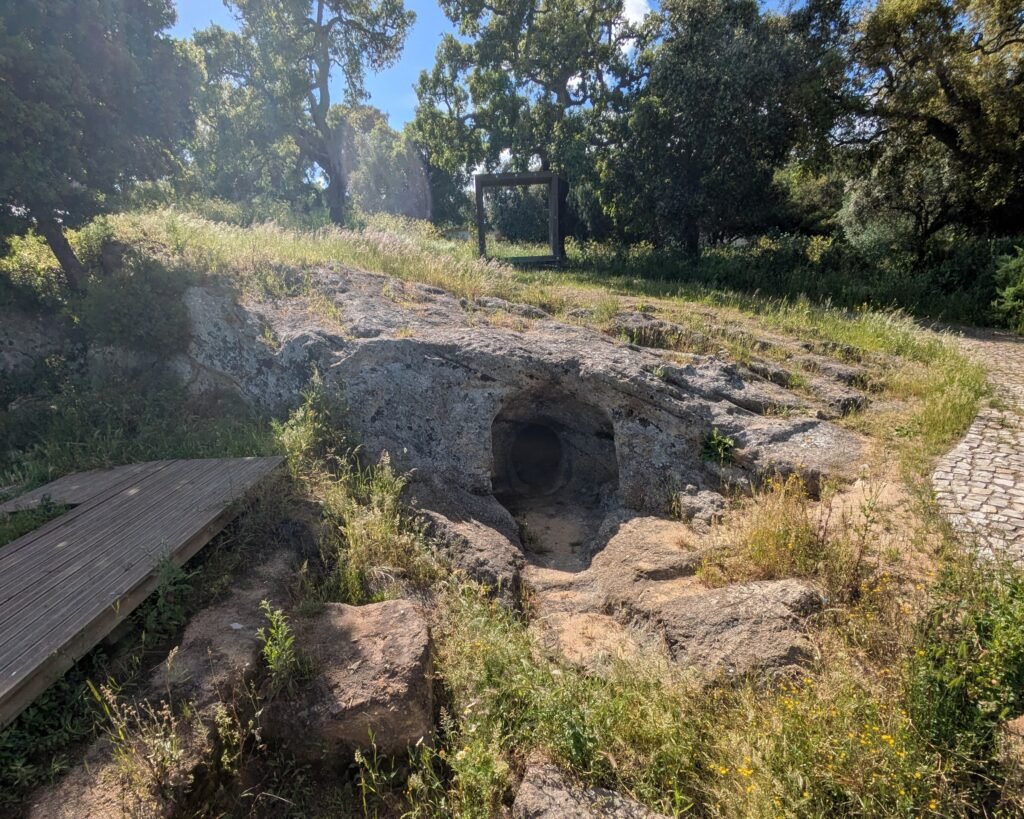

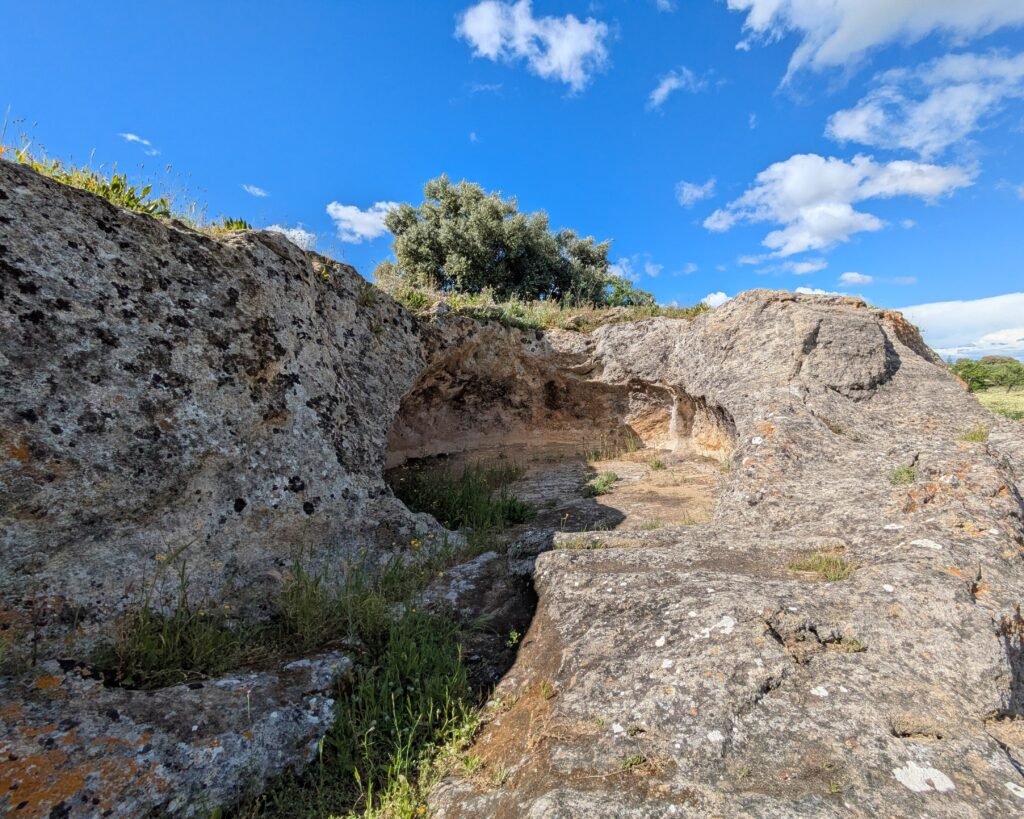
There are (or were) four grutas artificiais (artificial, or human-made, caves) in this complex. The caves were dug into the limestone with stone tools, so they pre-date the Chalcolithic era. They were dug probably between 3200 and 2900 BC, but were used at least until around 2000BC. Bronze Age artefacts have also been found, so they may have been used through that time period. They were used as a necropolis, or cemetary, as a place to entomb the dead.
The caves were first discovered in the modern era during the 1800’s, when quarrying activity partially destroyed caves #3 and 4. The caves were excavated by Carlos Ribeiro and António Mendes, and they were described in detail by Émile Cartailhac in his 1886 book “Les Âges préhistoriques de l’Espagne et du Portugal.”1 This attracted much attention in the world of archaeology, and lent their name to two distinctive finds. The “Palmela bowls” and the “Palmela points” (arrow heads). The caves were excavated again in the 1910’s and were detailed in the Leisner’s work in the 1950s. Most recently, extensive excavations have been conducted between 2013-2017. The caves were declared a National Monument in 1934.
The caves are numbered 1 to 4, from East to West. Each cave follows a standard form: a huge chamber (between 4 and 5 meters in diameter), with a central skylight that would have been covered with a stone. They would have had an ovoid antechamber, with a long entrance corridor angling gently downward. While all of the caves followed a similar construction pattern, they all have different orientations, with the entrance corridor pointing in different directions.2

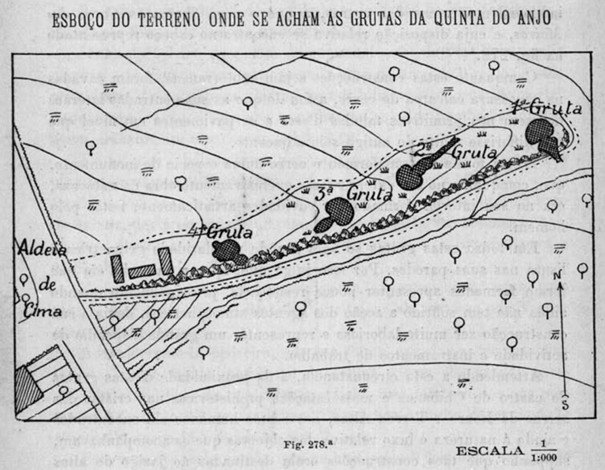
Caves 3 and 4 are mostly destroyed from the quarrying activity that resulted in their discovery. Cave #4 is almost completely gone, while #3 looks like it’s been cut in half.
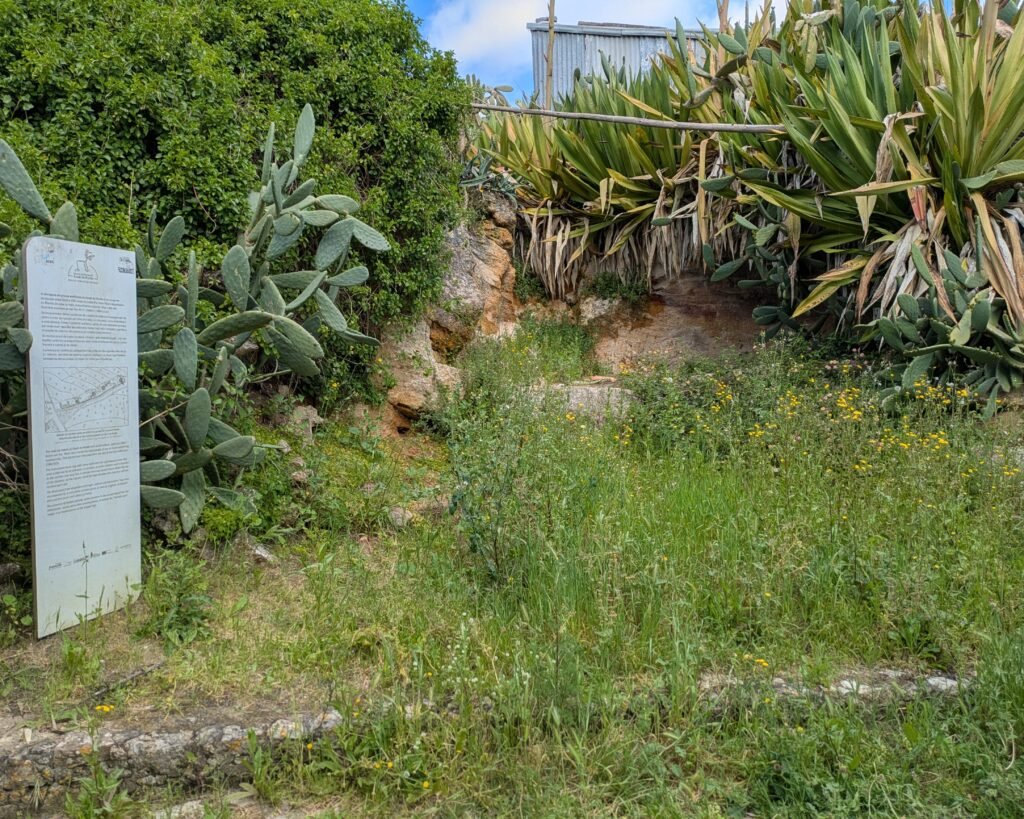


Caves #1 and 2 have each lost much of their antechamber and corridor, but their main chambers are intact.
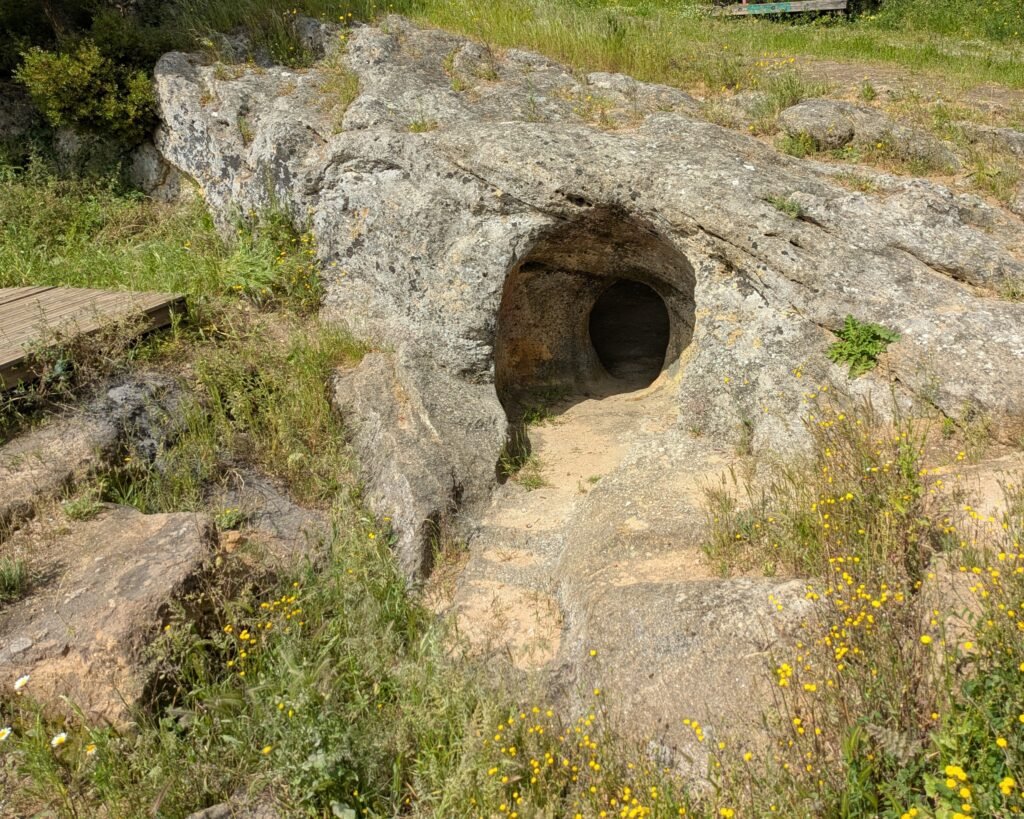
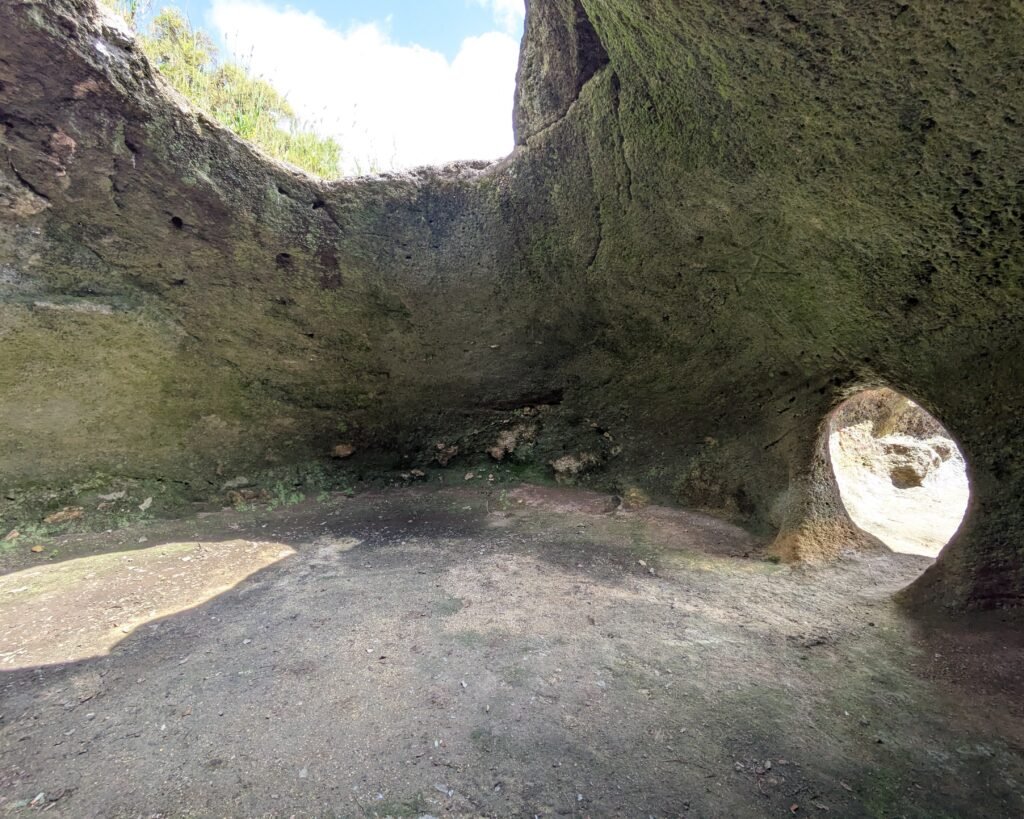


On cave #2, it’s quite easy to see the shape of the oval antechamber (left side of the photo below) and the path of the corridor (right side).

There are three information signs at the site (click each image to see larger):
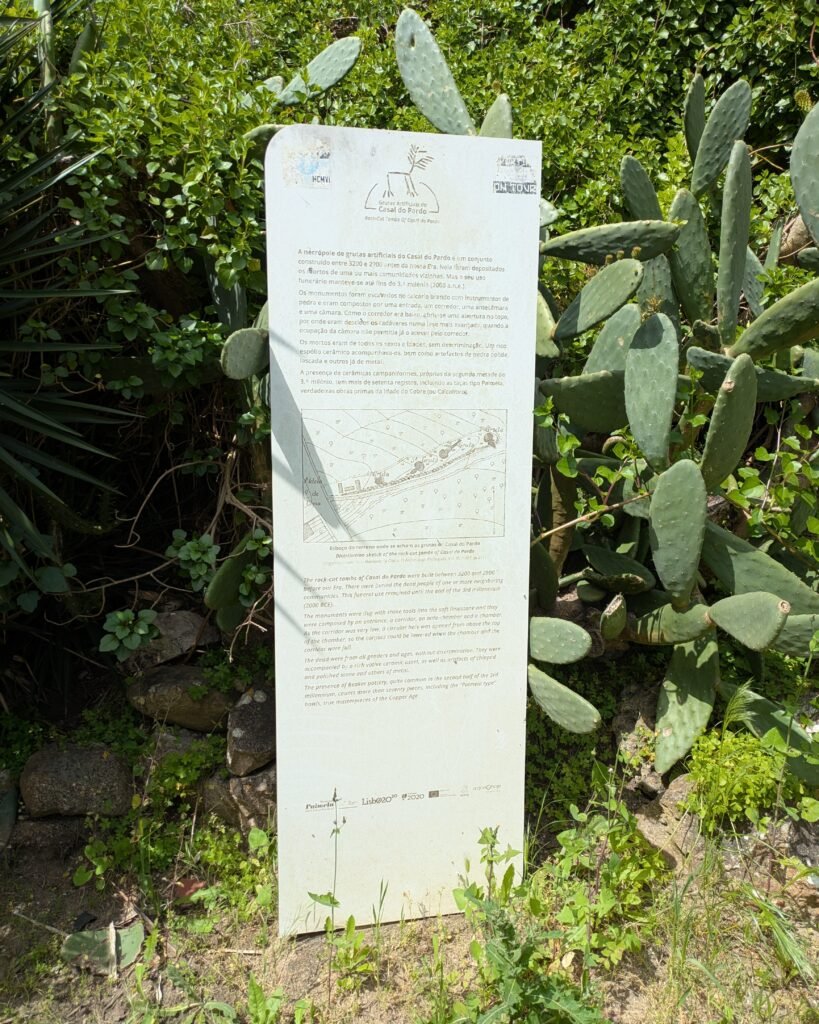


The 1993 marker reads:
These caves were opened around 3,500 BC, therefore they are considered artificial and prehistoric, serving as tombs for more than a thousand years. Funeral remains were found here from the end of the stone age and the beginning of the metal age (Chalcolithic – Copper Age). The artefacts were found during two excavations (1878 and 1907) and are kept in the National Archaeological Museum in Belém and the Geological Museum in Lisbon. During their period of use, objects of personal use and of religious character were placed with the dead: weapons, ornaments, ceramics, idols, etc. A large diversity of objects was found here, the most important of which were ceramics, designated bell-shaped, as the ceramic pieces were shaped like a bell. They were decorated with various geometric designs as shown below. (Whose specific characteristics form a type of Portuguese bell-shaped vase.) The serious mutilation which the caves display were caused by rock quarrying by construction in the 19th century.
Panel erected in the commemorations of the 5th century of the charter of Palmela, by the town council. Paulo Abreu 1993
Besides the caves themselves, their spoils are phenomenal. (Most are in the National Archaeological Museum in Belém.) Many stone tools, from arrowheads to adzes. Polished stone items (votive offerings, ornaments, etc.) were also found. Some jewellery and ceramics were found, including a distinctive type of bell-beaker ceramics, which is now known as the “Palmela type.”
The caves themselves, as well as the artefacts that were found, are highly significant archaeologically. They have been very well studied and are known internationally.
Location
The caves are in the district of Setúbal, in the municipality of Palmela, parish of Quinta do Anjo. They are on the edge of the town of Quinta do Anjo.
Coordinates: 38,5642008, -8,9385825
Access
The caves are right alongside a road, so they are very easy to reach. (Parking is easiest along the main road where the final “entrance” sign is located.) There is a wooden platform with benches in front of the entrance to Cave #1. There is a small walk up the outcrop to reach cave #2.
Signage
There are signs in the town of Palmela directing you to “Sepulcros Neolíticos” (“Neolithic Tombs).

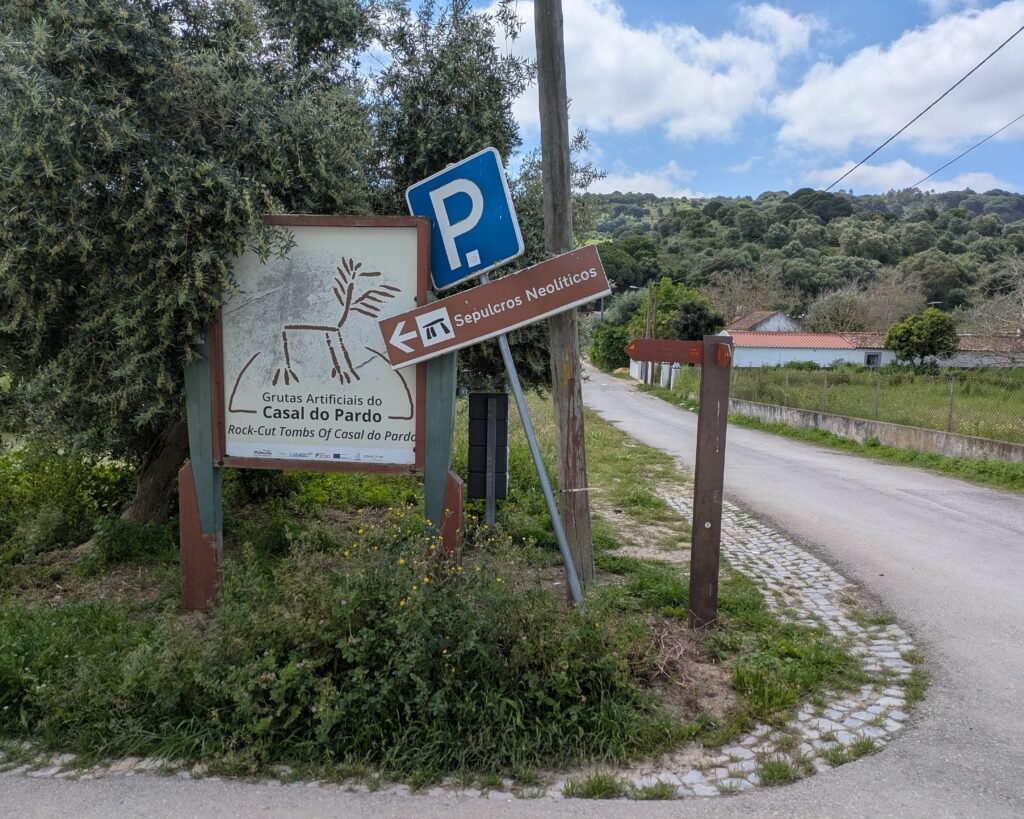
Links
- Article (in English) from Wikipedia
- Entry (in English) in the Megalithic Portal
- 3D Model (language neutral) by Luís Câmara on Sketchfab
- “A Short Guide” PDF (in English and Portuguese) published by the Municipal Museum of Palmela
- Description (in Portuguese) from the Town Hall of Palmela
- Description (in Portuguese) from the Parish of Quinta do Anjo
- Description (in Portuguese) and photos from PhotoArch
- Description (in Portuguese) from Archaeologist’s Portal of Directorate-General of Cultural Heritage
- Designation (in Portuguese) as a National Monument by the Directorate-General of Cultural Heritage
- Detailed information (in Portuguese) in the database of the Directorate-General of Cultural Heritage
- Photos and description of artefacts (in Portuguese) in the RAIZ database of Museus & Monumentos de Portugal (enter “Quinta do Anjo” into “Origem Historial”)
Nearby
The Castro de Chibanes is extremely close: only about 3km away. It is a Chalcolithic Castro (hillfort) that likely made use of the caves during that period.
Sources
- Cartailhac, Émile. Les Âges Préhistoriques de l’Espagne et du Portugal. 1886, gallica.bnf.fr/ark:/12148/bpt6k6205536k/f169.item.texteImage.zoom. Accessed 18 Apr. 2025. ↩︎
- Soares, Joaquina. Os Hipogeus Da Quinta Do Anjo (Palmela) E as Economias Do Simbólico. Setúbal, Portugal, Museu de Arqueologia e Etnografia do Distrito de Setúbal/Assembleia Distrital de Setúbal, 2003, www.academia.edu/109018789/Os_hipogeus_pr%C3%A9_hist%C3%B3ricos_da_Quinta_do_Anjo_Palmela_e_as_economias_do_simb%C3%B3lico. Accessed 28 Mar. 2025. ↩︎
- COSTA, A. I. Marques da (1903-1910) – Estações pré- -históricas dos arredores de Setúbal. Grutas sepulchrais da Quinta do Anjo. O Archeólogo Português, VII-XV Accessed 29 Apr. 2025 through https://www.museunacionalarqueologia.gov.pt/?p=12060 ↩︎

Pingback:Castro de Chibanes - Prehistoric Portugal